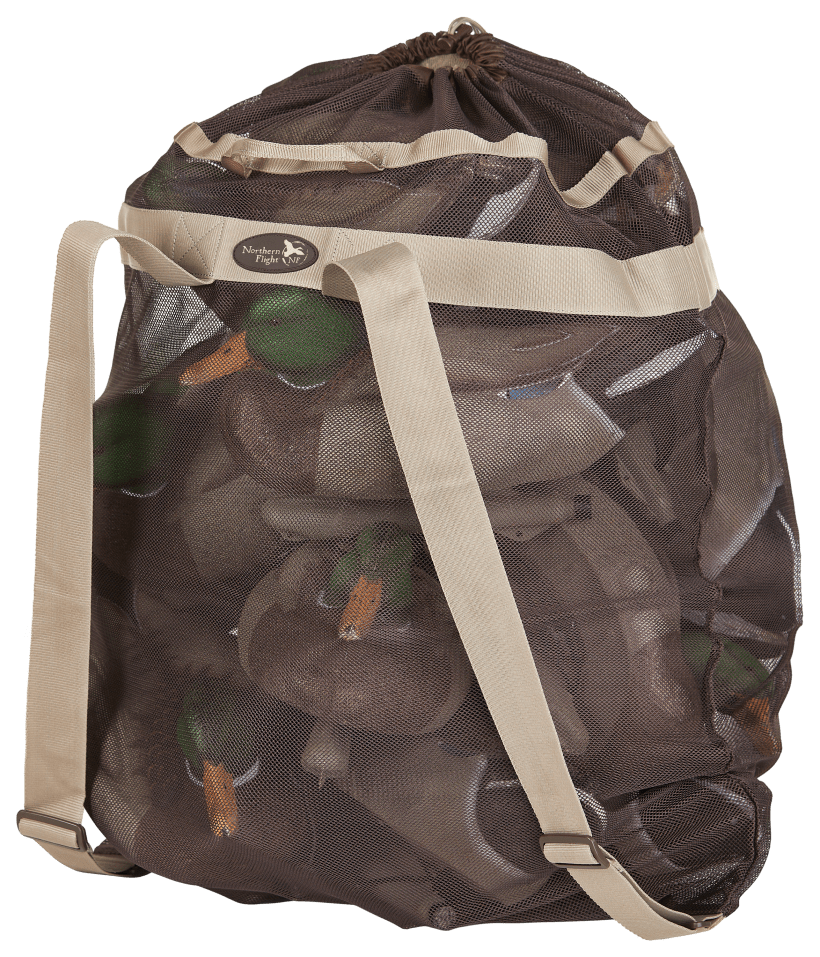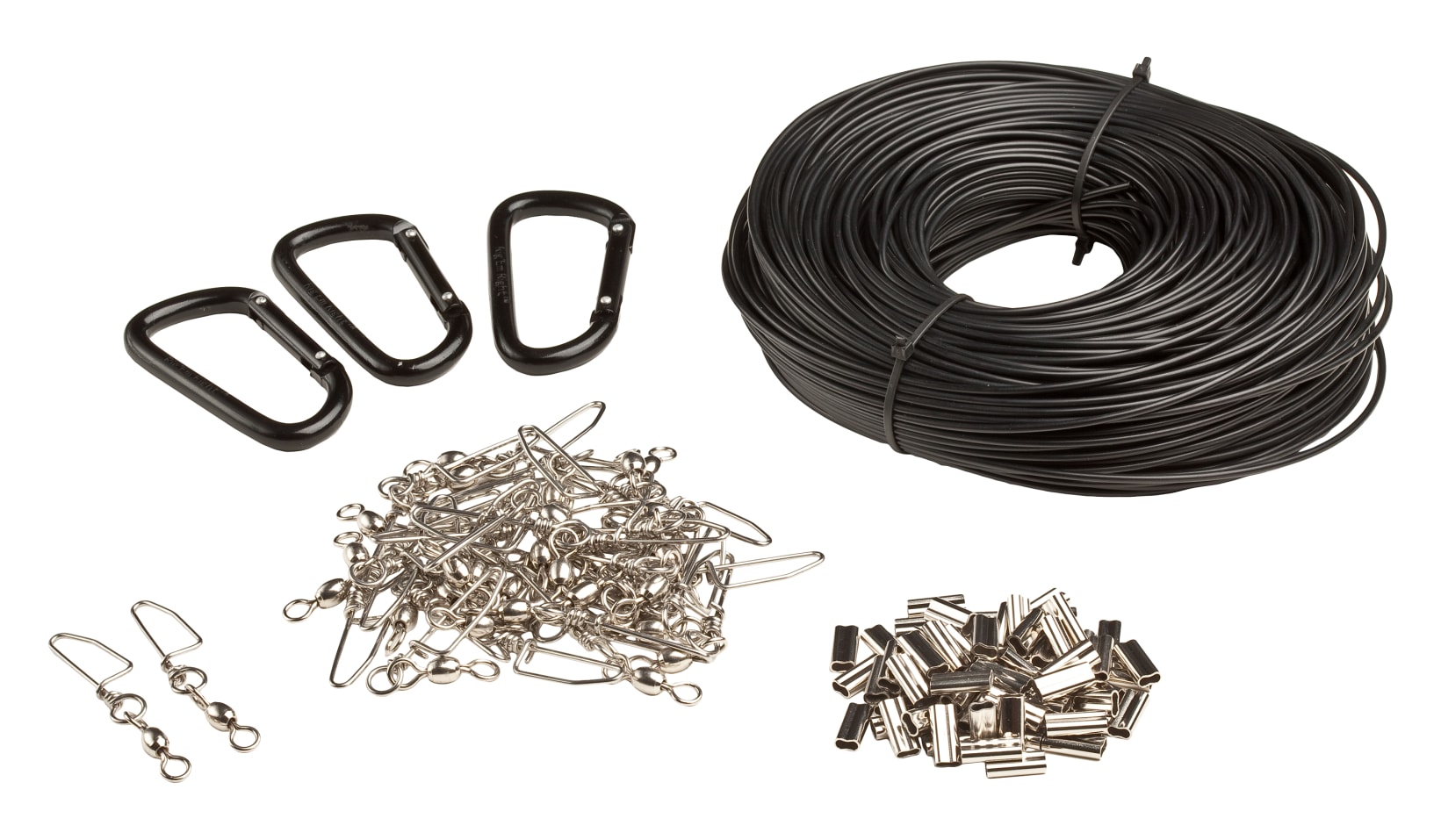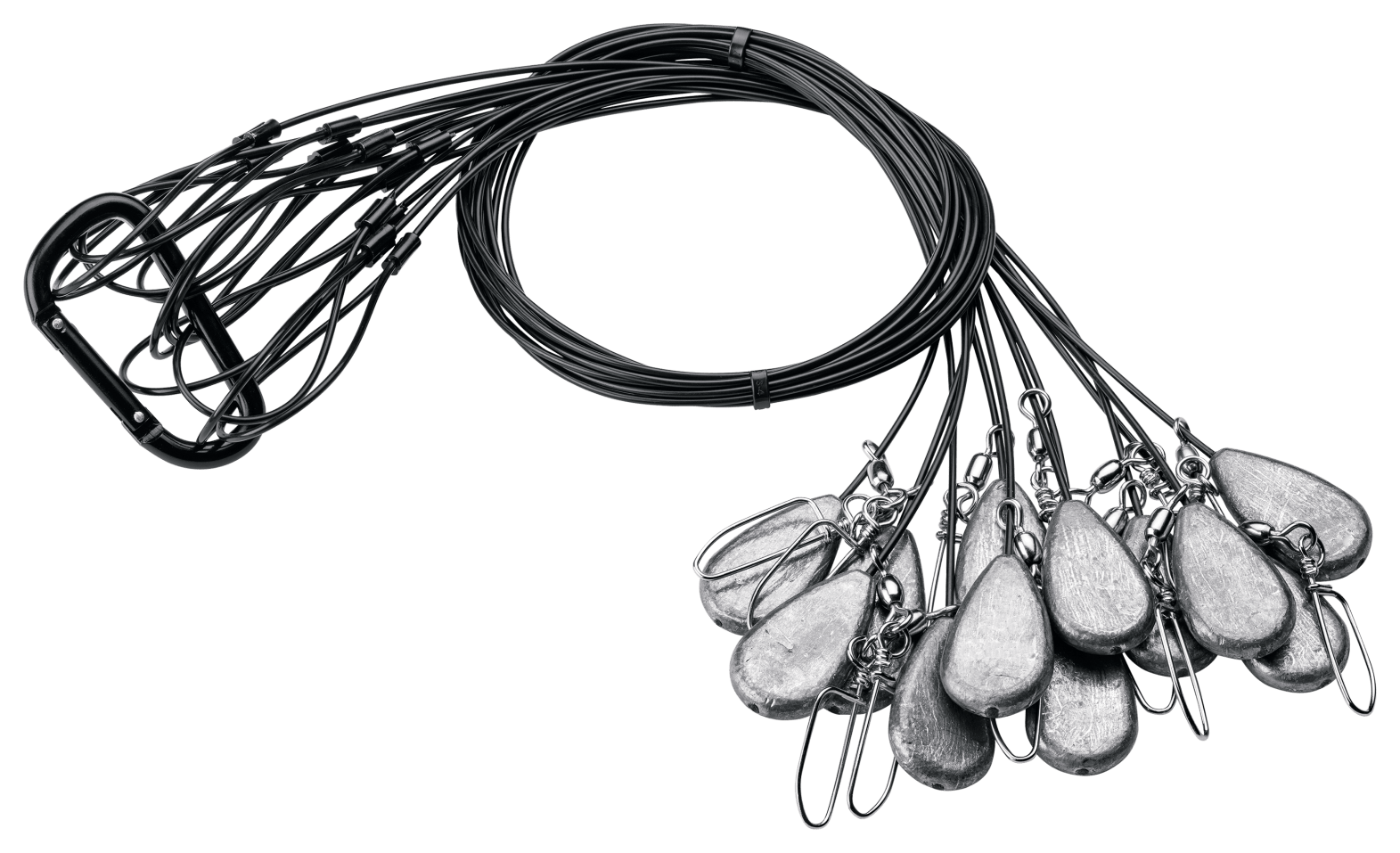
Waterfowl hunting is a cherished tradition that brings hunters close to nature and requires skill, patience, and the right equipment. One of the most essential pieces of equipment in waterfowl hunting is the decoy. Decoys are used to attract ducks and geese to your hunting area, but they can be costly and easily damaged if not properly cared for. As a waterfowl hunter, understanding how to prevent decoy damage can extend the lifespan of your decoys and save you money in the long run.
Here's how you can do just that:
Understanding Decoy Materials
Decoys are typically made from materials such as plastic, foam, and rubber. Each material has its own strengths and weaknesses. Plastic decoys are durable but can crack under extreme temperatures. Foam decoys are lightweight and easy to carry but can be punctured. Rubber decoys offer flexibility but can degrade over time if not properly maintained. Knowing the material of your decoys will help you take the appropriate steps to prevent damage.
Common Causes of Decoy Damage
Weather Elements
Weather elements can significantly impact the longevity and effectiveness of your decoys. Prolonged exposure to sunlight can cause the colors on your decoys to fade, making them less attractive to waterfowl. Rain and moisture can seep into decoys, especially those made from foam or rubber, leading to mold and mildew buildup, which can degrade the material over time. Snow and ice can cause the surface of decoys to become brittle, increasing the risk of cracks or breakage when they are handled or stored. Additionally, extreme temperature fluctuations can cause materials to expand and contract, further weakening the structural integrity of your decoys.
Improper Storage
Improper storage of decoys can result in a variety of issues that compromise their effectiveness and longevity. When decoys are stored in a cramped space, they can become misshapen or develop cracks from being pressed against each other. A damp environment promotes the growth of mold and mildew, which can degrade materials and cause unpleasant odors that might deter waterfowl. Exposing decoys to the elements, such as direct sunlight or extreme temperatures, can lead to fading, brittleness, and other forms of deterioration. Ensuring that decoys are stored in a cool, dry, and organized space can significantly mitigate these risks and keep them in optimal condition for the next hunting season.
Rough Handling
Rough handling of decoys can lead to significant physical damage that reduces their effectiveness and lifespan. Dropping decoys can cause cracks or dents, particularly in plastic models, which can compromise their buoyancy and realistic appearance. Dragging decoys across rough surfaces like gravel, pavement, or even coarse sand can result in scratches and abrasions that not only mar their aesthetic appeal but also make them more prone to further damage. Additionally, rough handling can weaken attachment points and seams, increasing the likelihood of parts breaking off during use. To maintain the integrity of your decoys, always handle them with care, lifting and placing them gently to avoid unnecessary wear and tear.
Storage Techniques
Off-Season Storage Tips
Before storing your decoys for the off-season, give them a thorough cleaning to remove any accumulated dirt, grime, and waterfowl scent. This can be done using mild soap and water, followed by a rinse with clean water to ensure no residue is left behind. Cleaning helps prevent the growth of mold and mildew and removes scents that can attract pests.
While cleaning, take the opportunity to inspect each decoy for any signs of wear and tear, such as cracks, punctures, or faded paint. Address any minor repairs immediately, using waterproof glue for small cracks and patch kits for larger damages. This proactive approach ensures your decoys are ready to go when the next hunting season arrives.
After cleaning, make sure your decoys are completely dry before storing them. Moisture left on decoys can lead to mold growth and material degradation over time. Lay them out in a well-ventilated area or use a soft cloth to dry them off thoroughly.
Northern Flight Mesh Decoy Bag
Our Northern Flight® Mesh Decoy Bag makes it easy to pack your trusted decoys in and out of the field. It can hold up to 12 magnums or 18 standard-size duck decoys. Heavy-duty mesh stands up to seasons of use without weighing you down. A drawstring cinches the bag close, and built-in shoulder straps makes packing in and out easier.
Shop NowNorthern Flight Full-Body Duck Decoy Bag
Keep your full-body duck decoys organized and protected with our premium Northern Flight® Duck Decoy Bag. Heavy-duty bottom features quick-drain, rubber mesh panels to shed water, reducing the bag's weight and speeding drying time. Strong 600D PVC walls and slots hold up to seasons of rough abuse for worry-free use. Large front pockets with buckle closures hold accessories.
Shop NowOrganize your decoys by storing them in decoy bags or bins. These containers not only keep your decoys organized but also offer protection from physical damage and dust. Decoy bags with individual compartments can prevent decoys from rubbing against each other, reducing the risk of scratches and dents.
Select a storage area that is cool and dry, such as a basement, garage, or a dedicated storage room. Avoid places with high humidity or temperature fluctuations, as these can negatively affect the materials of your decoys. Keeping them out of direct sunlight also prevents UV rays from causing colors to fade and materials to become brittle.
Protecting Decoys from Weather Elements
Leaving decoys outside exposes them to harmful UV rays, which can cause the colors to fade over time, making them less attractive to waterfowl. Additionally, extreme temperatures—whether hot or cold—can cause the materials to crack, warp, or become brittle. Always bring your decoys indoors or into a sheltered area when they are not actively in use to prevent these issues.
When storing decoys in an outdoor shed or garage, cover them with a weather-resistant tarp or specialized decoy cover. These covers provide an extra layer of protection against moisture, dust, and temperature fluctuations. Ensure the cover is securely fastened to prevent it from blowing off during windy conditions and check periodically to make sure it remains in good condition.
Elevate your decoys off the ground by placing them on shelves or hanging them from hooks. This prevents direct contact with potentially damp or cold surfaces, reducing the risk of moisture absorption and subsequent mold or mildew growth. It also helps protect them from pests like rodents that might gnaw on the materials.
If possible, store your decoys in a climate-controlled environment where temperature and humidity levels are regulated. This is especially important for decoys made from materials that are susceptible to temperature and humidity changes, such as foam or rubber. A stable environment helps maintain the integrity and longevity of the decoys.
Even in storage, it's good practice to periodically rotate and inspect your decoys. This helps ensure that no single decoy bears the brunt of environmental stressors for an extended period. Regular inspections allow you to catch any signs of damage early, such as fading, cracking, or mildew, so you can address them before they become significant problems.
Preventative Measures During Use
Setting Up Decoys Correctly
When setting up your decoys, always place them gently into the water or on the ground. Throwing or dropping decoys can cause impact damage such as cracks, dents, or even internal damage that may not be immediately visible. By handling them with care, you can preserve their structural integrity and appearance, ensuring they remain effective for attracting waterfowl.
Proper spacing is crucial to prevent decoys from banging into each other, which can lead to scratches, dents, and paint chipping. Ensure there is enough distance between each decoy to allow for natural movement and to create a realistic spread. This not only protects your decoys but also enhances the overall effectiveness of your setup by mimicking the natural behavior of waterfowl.
Consider the direction of the wind and water current when placing your decoys. Position them in such a way that they can move naturally with the elements without colliding with each other. For example, place decoys facing into the wind or current, as this is how real ducks and geese typically position themselves. This realistic movement can increase your chances of attracting waterfowl while minimizing the risk of damage.
Incorporate a mix of different poses and species into your decoy spread. This not only creates a more convincing and natural scene but also helps distribute the decoys more evenly, reducing the likelihood of them colliding. A diverse spread can make your setup more attractive to a wider range of waterfowl, improving your hunting success.
Ensure that each decoy is securely anchored to prevent them from drifting into each other or being swept away by strong winds or currents. Use appropriate weights and anchor lines, and check that they are properly attached. Tangle-free anchor lines can make setup and retrieval easier while reducing the risk of tangling and subsequent damage.
How to Secure and Anchor Decoys
Rig'Em Right Do-It-Yourself Kit
The Rig'Em Right Do-It-Yourself Kit has all the heavy-duty components needed to custom make your own Rig' Em Right or Texas Style decoy anchor systems. There's enough hardware in this kit to create 3 dozen, 8-foot long rigs. The kit contains 300' of Rig'Em Right's 400-LB monofilament, 36 stainless steel swivels, 75 nickel plated brass crimps, 3 carabineer clips. Weights are sold separately.
Shop NowSelecting the right weights and anchors for your decoys is crucial to keeping them in place, particularly in windy conditions or strong currents. Weights that are too light can lead to decoys drifting away, which not only disrupts your setup but also increases the risk of damage as they collide with each other or with natural obstacles. Use heavier weights for larger decoys and in areas with stronger winds or currents to ensure they remain stable and effective throughout your hunt.
Traditional anchor lines can easily become tangled, leading to knots and snarls that can put undue stress on both the lines and the decoys. Tangle-free anchor lines, designed with swivels or special coatings, can significantly reduce this problem. By keeping the lines tangle-free, you make setup and retrieval faster and easier while also minimizing the risk of damage caused by pulling or jerking on snagged lines.
Ensure that the length of your anchor lines is appropriate for the depth of the water and the conditions you are hunting in. Lines that are too short may not allow the decoys to move naturally, while excessively long lines can get tangled or caught on underwater obstructions. Adjust the length to provide enough slack for natural movement without causing entanglement, optimizing both the realism and safety of your decoys.
Regularly check the attachment points where the anchor lines connect to the decoys. Weak or frayed connections can break easily, leading to lost or drifting decoys. Reinforce attachment points with sturdy knots or specialized clips designed for decoy use. Ensuring a secure connection helps maintain the stability of your spread and prevents potential damage from loose or detached decoys.
Northern Flight HD Tx-Style Decoy Rigs
Use our Northern Flight HD Tx-Style Decoy Rigs to set up, retrieve, and store your decoys quickly and easily. Decoy rig kit includes 12 pre-rigged lines - just connect the lock snaps to your decoy keels, remove from the carabiner, and deploy. After the hunt, simply connect the loops to the carabiner and off you go!
Shop NowInvesting in a quality decoy rigging system can simplify the process of securing and anchoring your decoys. These systems often come with pre-set weights, lines, and clips that are designed to work together efficiently. Rigging systems can save time during setup and retrieval, reduce the likelihood of tangles, and provide a more reliable and secure anchoring solution, enhancing the overall effectiveness and safety of your decoy spread.
Routine Maintenance
Cleaning and Repairing Decoys
Make it a habit to clean your decoys regularly using a solution of mild soap and water. This routine maintenance helps remove accumulated dirt, algae, and other debris that can affect the appearance and effectiveness of your decoys. Use a soft brush or cloth to gently scrub the surface, ensuring you reach all crevices without causing any scratches or abrasions. Regular cleaning not only keeps your decoys looking realistic but also extends their lifespan by preventing the buildup of harmful substances.
While it might be tempting to use strong cleaners for stubborn stains or algae, harsh chemicals can degrade the material of your decoys over time. Chemicals like bleach or industrial cleaners can cause fading, brittleness, and even structural damage. Stick to mild, non-abrasive soaps and natural cleaning solutions to maintain the integrity and appearance of your decoys. For particularly tough spots, consider using a specialized decoy cleaner that is formulated to be safe for the materials.
Periodically inspect each decoy for signs of damage, including cracks, holes, faded paint, or loose parts. Perform these inspections both before and after each hunting season to catch any issues early. Promptly addressing minor damages can prevent them from worsening and potentially ruining the decoy. Regular inspections help ensure that your decoys remain in top condition and ready for use when needed.
For small cracks and holes, use waterproof glue to make quick and effective repairs. Apply the glue carefully to the damaged area, ensuring it penetrates the crack or hole and creates a watertight seal. Allow the glue to dry completely before using the decoy again. Waterproof glue is ideal for minor fixes and helps maintain the buoyancy and functionality of your decoys.
For more significant damages, such as large holes or extensive cracks, employ patch kits specifically designed for decoy repair. These kits typically include adhesive patches, sealants, and instructions for application. Follow the manufacturer's guidelines to ensure a durable and effective repair. Properly patched decoys can continue to perform well and look realistic, saving you the cost of replacement.
Checking for Wear and Tear
Make it a habit to frequently inspect your decoys, ideally before and after each hunting trip. Regular inspections help you catch early signs of wear and tear, such as faded paint, small cracks, or loose parts. This proactive approach allows you to address minor issues before they escalate into more significant problems that could compromise the decoy's functionality and effectiveness.
Over time, exposure to the elements can cause the paint on your decoys to fade, reducing their attractiveness to waterfowl. During your inspections, look for areas where the paint has dulled or chipped. Touch up these spots with waterproof paint designed for outdoor use. Keeping your decoys looking vibrant and realistic ensures they continue to effectively attract birds.
Small cracks and holes can develop in decoys from regular use and exposure to harsh conditions. Carefully examine each decoy for these signs of damage. Use waterproof glue to seal small cracks and patch kits for larger holes. Addressing these issues promptly helps maintain the buoyancy and structural integrity of your decoys, preventing water infiltration that could lead to further damage.
Loose parts, such as heads, feet, or attachment points for anchor lines, can affect the stability and realism of your decoys. Check these components for any looseness or signs of wear. Tighten or replace any parts as needed to ensure they are secure. Keeping all parts firmly in place ensures your decoys remain effective and reduces the risk of losing pieces during transport or use.
Different materials degrade at different rates, so pay attention to any signs of material fatigue, especially in older decoys. Foam decoys may show signs of punctures or compression, while plastic ones may become brittle or develop stress marks. Recognizing these signs early allows you to make necessary repairs or consider replacements before the decoys become unusable. Regularly maintaining the integrity of the materials extends the overall life of your decoys.
Special Precautions
Combatting Decoy Frost
In freezing conditions, a light coating of windshield wiper fluid can be applied to your decoys to prevent frost from forming. Windshield wiper fluid contains antifreeze components that inhibit frost buildup, maintaining the decoys' realistic appearance and effectiveness. Simply spray a thin layer over the surface of each decoy before placing them in the field. Make sure to use a non-toxic, environmentally safe formula to avoid harming wildlife or the environment.
If frost does form on your decoys, it's important to remove it carefully to avoid causing any damage. Use a soft cloth or a gentle brush to wipe away the frost, taking care not to scratch or abrade the surface. Abrasive materials or vigorous scrubbing can damage the paint and material, reducing the decoys' effectiveness and longevity. By gently removing the frost, you maintain the decoys' visual appeal and functionality without risking damage.
During your hunt, regularly check your decoys for any signs of frost buildup. In particularly cold conditions, frost can form quickly, so periodic monitoring ensures that you can address it promptly. Carry a soft cloth or brush with you to make quick adjustments as needed. Consistent attention to frost prevention and removal not only keeps your decoys in optimal condition but also enhances your hunting success by maintaining a lifelike spread.
Avoiding Tangled Decoys
Northern Flight Full-Body Duck Decoy Bag
Keep your full-body duck decoys organized and protected with our premium Northern Flight® Duck Decoy Bag. Heavy-duty bottom features quick-drain, rubber mesh panels to shed water, reducing the bag's weight and speeding drying time. Strong 600D PVC walls and slots hold up to seasons of rough abuse for worry-free use. Large front pockets with buckle closures hold accessories.
Shop NowInvesting in decoy bags with individual compartments is an effective way to keep your decoys organized and tangle-free. These compartments separate each decoy, preventing them from rubbing against each other and reducing the risk of scratches, dents, and paint chipping. Additionally, organized storage in individual compartments streamlines the process of setting up and packing down your decoy spread. You can quickly grab and place each decoy without the frustration of untangling lines, making your hunting experience more efficient and enjoyable.
When anchoring your decoys, consider using swivels or clips on your lines. Swivels allow the decoys to rotate freely with the movement of the water, reducing the chances of lines twisting and tangling. Clips provide a quick and easy method for attaching and detaching the anchor lines, which is particularly useful during setup and takedown. These simple additions can save you time and effort, preventing the hassle of dealing with knotted lines and ensuring your decoys remain securely in place.
In addition to using swivels and clips, practicing proper line management techniques can further prevent tangles. When winding up your anchor lines after use, do so carefully to avoid creating knots. Store the lines neatly in a designated area of your decoy bag or bin, ensuring they remain separated and untangled. This attention to detail during both setup and takedown will help maintain the condition of your decoys and anchor lines, enhancing the overall effectiveness and ease of your hunting preparations.
Preventing decoy damage is crucial for every waterfowl hunter. By understanding the materials your decoys are made from, recognizing common causes of damage, and adopting proper storage and maintenance techniques, you can significantly extend the life of your decoys. Taking preventative measures during use, such as setting up and securing decoys correctly, and using special precautions to combat frost and tangling, will keep your decoys in top condition. Finally, selecting the right number of decoys and arranging them effectively will enhance your hunting success while ensuring your decoys remain damage-free.
Investing the time and effort to care for your decoys not only protects your investment but also enhances your overall hunting experience. Happy hunting and may your decoys always attract flocks of waterfowl to your spread!
- 2338 views





